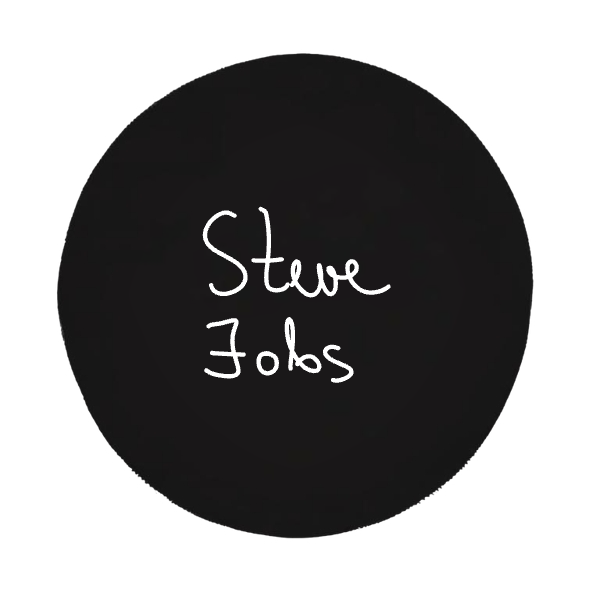Objective
This study explores whether Steve Jobs—co-founder of Apple Inc., visionary entrepreneur, and cultural icon—aligns with the INTJ (Introverted, Intuitive, Thinking, Judging) personality type by analyzing his innovation style, long-term strategy, leadership behavior, and cognitive patterns.
Framework: MBTI Cognitive Functions
- Ni (Introverted Intuition) – dominant
- Te (Extraverted Thinking) – auxiliary
- Fi (Introverted Feeling) – tertiary
- Se (Extraverted Sensing) – inferior
Data Collection: Observed Traits of Steve Jobs
- Singular vision and foresight: Jobs famously envisioned not just products but the future. He imagined how technology should feel and be used—often long before the market caught up. This long-range symbolic patterning reflects dominant Ni.
- Efficient, results-driven decision-making: He was known for direct communication, high standards, and a relentless drive for execution. Jobs eliminated distractions, focused on essentials, and demanded functional excellence—hallmarks of auxiliary Te.
- Internally driven and emotionally intense: Though often viewed as cold or abrasive, Jobs’s speeches (like the Stanford commencement address) revealed a profound sense of purpose, individualism, and moral clarity—suggesting tertiary Fi beneath the surface.
- Aesthetic sensitivity but low sensory patience: While obsessed with the visual and tactile details of Apple products, Jobs was easily frustrated by clunky interfaces or sensory chaos. His connection to the physical world came in bursts of control, not sustained attention—classic inferior Se.
Pattern Analysis via Cognitive Functions
Ni (Dominant Introverted Intuition)
- Evidence: Jobs could articulate a future others couldn’t yet see—such as the convergence of music, computing, and telecommunication. His vision was not about current needs but about shaping desire itself.
- Analysis: Ni-dominant types pursue internal visions with focus and conviction. Jobs exemplified this through his obsession with elegance, simplicity, and user experience.
Te (Auxiliary Extraverted Thinking)
- Evidence: Jobs created systems to execute vision: product pipelines, marketing machines, launch events. He removed inefficiencies and enforced structural discipline across teams.
- Analysis: Te complements Ni by externalizing it into actionable plans. Jobs used this function to build Apple’s empire around design-driven execution.
Fi (Tertiary Introverted Feeling)
- Evidence: Beneath his intense exterior, Jobs was deeply individualistic—devoted to artistic purity, intuition, and internal truth. He often rejected market data if it clashed with his internal values.
- Analysis: Fi added moral and aesthetic depth to his Ni–Te system. It gave his products soul—but also contributed to his reputation for being uncompromising.
Se (Inferior Extraverted Sensing)
- Evidence: Jobs demanded perfection in materials, screens, and packaging—but was emotionally reactive when sensory inputs weren’t ideal. He both worshipped and struggled with the real world.
- Analysis: Se, while underdeveloped, surfaced in his obsession with product design and intense live presentations. His sensory focus was purposeful, not natural.
Conclusion
- Dominant Ni → long-term vision, pattern insight, symbolic clarity
- Auxiliary Te → structured execution, productivity, direct leadership
- Tertiary Fi → deep internal values, personal authenticity, idealism
- Inferior Se → sensory control and frustration, occasional overindulgence in detail
Synthesis
Steve Jobs is a near-archetypal INTJ: visionary, methodical, and deeply driven by internal foresight. His Ni–Te pairing created a powerful engine for innovation—where symbolic future insight met high-performance implementation. Jobs didn’t follow trends; he generated them. Beneath the control and intensity was a private moral compass (Fi) that fueled his obsession with beauty, meaning, and user experience. Despite inferior Se, he wielded aesthetics and design like tools of persuasion and enchantment. He was not just an entrepreneur—he was a builder of futures, powered by insight, structure, and purpose.
***
